Our flight to Kabul was on Ariana Airlines, which is Afghanistan’s national carrier, operated by the government. Most of their planes are in shambles and they are no longer allowed to operate in Europe. Maybe I had my rose-colored glasses on, but my experience was great.
First, we were upgraded to the exit row with tons of extra legroom. The service and food were both excellent. It doesn’t look too appetizing in the photos, but I promise it was good. It probably helped that I had very low standards, to the point that I didn’t even expect them to serve meals on a 3-hour flight.
- Kabul Airport
- Kabul Airport customs and immigration
- Kabul Airpot baggage claim
- Beggars at Kabul Airport
- First impressions of Kabul
- Kabul weather and dress code
- Shopping in Kabul
- Kabul street vendors
- Mandawi Market, Kabul
- Babur Gardens, Kabul
- Darul Amman Palace, Kabul
- Intercontinental Hotel Kabul
- Stories from my 2011 trip to Afghanistan
Kabul Airport
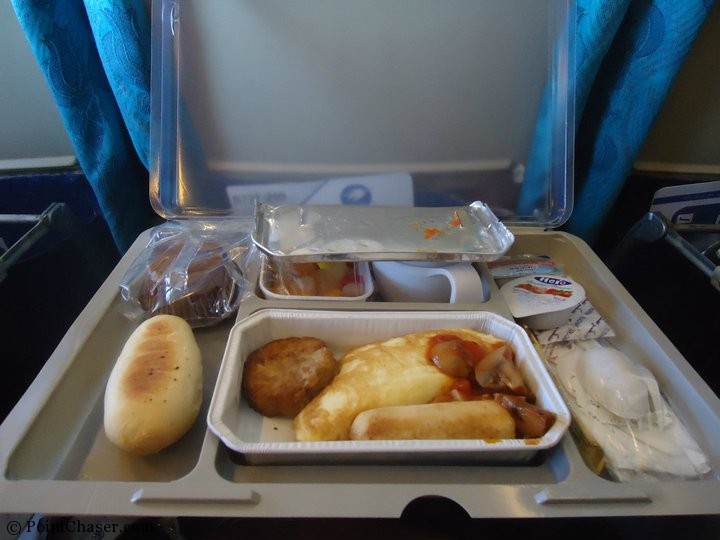
The moment we stepped off the plane, I pulled out my camera and began recording what in my mind was an important event. A female airport worker began waving at me frantically, saying I was not allowed to film. I stopped, but once I got on the bus taking us to the main airport terminal, I resumed filming and taking photos.
As soon as we stepped off the bus, I noticed a large poster on the side of the building with the words “Afghanistan: Land of the Brave,” featuring a man with his arms stretched out towards a landscape and the Afghan flag. Just as I positioned my camera to take a photo, an airport security official walked up and said I was not allowed to take photos in this area.
As you might have guessed by now, “No photos allowed” became the theme pretty much everywhere we went. I mostly ignored these warnings and got away with it. I asked very nicely, “Just one photo, please?” And just like that he gave in. However, my camera battery died and his colleague walked out and reprimanded him for letting me take a photo. “She deleted it!” the first official insisted in defense, and the two began arguing. At that point, my battery was dead so I walked away.
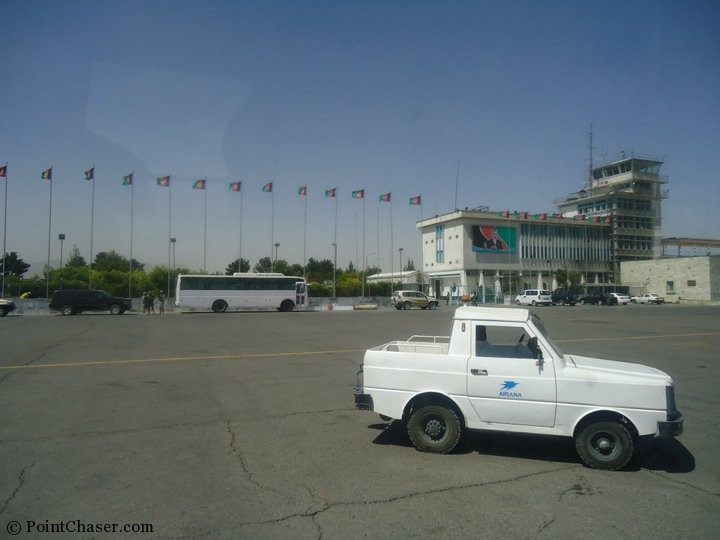
Kabul Airport customs and immigration
The main airport building has been around since the 60’s. $25 million was recently allocated to renovate it. Looking around the immigration line, I could not for the life of me figure out where all the money went. I assume its resting on a lot in the wealthy Wazir Akbar Khan neighborhood or a villa in Dubai.
The line was moving very slowly when a bit of a ruckus ensued. An immigration official took issue with a French man’s visa, and the guy in front of us told the French man in Dari, “Just give him 50 Afghanis ($1) and he’ll let you pass.” Another official overheard this, came barging over and shouted “What did you say?!” The guy in front of me responded with, “I was referring to getting him a Taxi.” “No, I heard you. You keep your 50 Afghanis. I know that’s a lot of money where you come from!”
It wasn’t the insinuation of being bought that angered him, but rather the amount that was offered. To heal his bruised ego, this guy was going to show us all how important he was by getting into a pissing contest with the man who insulted him. The two began bickering while the French man was allowed to pass. The guy in front of us eventually began passing through immigration while fully engaged in a verbal battle with the other official. It was totally bizarre.
It became obvious these officials were resentful that all of these Afghans passing through lived abroad, something that was out of reach for them. I’m sorry for that, but there’s no need to act like a bunch of jerks. We’ve returned “home” after 20 years, would it kill them to give us a warm welcome?
The immigration official didn’t even look up as he flipped through our passports. My sister wasn’t born in Afghanistan, so the official began giving my parents a hard time about it. “It says on here she was born in Germany. How do I know she’s your daughter? You need to bring us a letter from the American embassy, saying its ok for her to travel with you.”
My dad stopped the nonsense right there. He pointed out that all of us had passports with the same last name and address on them and he didn’t need permission to travel with his own daughter. At this, the official half-heartedly retorted, “Well, next time make sure you have a letter” before stamping our passports and letting us pass.
Kabul Airpot baggage claim
It took over an hour for us to collect our bags. Clearly, this airport wasn’t equipped to handle such a high volume of passengers. At the carousel, men with carts offered passengers help with their luggage for a small fee. Once we collected our luggage, we had to go through a metal detector before being allowed outside.
Call me crazy, but if someone wanted to blow up the airport, would they really be waiting until after they collected their bags (which passed a security check in Dubai and likely contain no explosives)? And isn’t the immigration line a more desirable place to detonate explosives? Seems to me, they had it backwards. When I walked to the other side to collect my bag, the security officials were busy talking and didn’t even bother looking at the monitors.
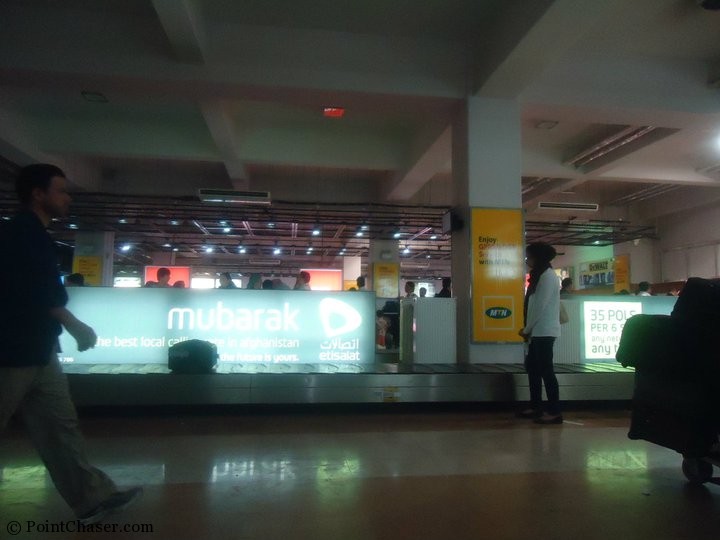
Beggars at Kabul Airport
We were walking towards the car when I suddenly felt someone tugging at my sleeve. A 10 year-old boy was tailing me, saying “Auntie, give me a few dollars, please?” I was suspicious of this kid and felt like he was going to stick his hand in my purse. I had been warned ahead of time not to give money to beggars. Most of them are scam artists and once you give them cash, the floodgates will open and the rest of them will come after you. Besides, I wanted to save my cash for the hard-working kids on the street who sold things like gum and bottled water to support their families.
Trying to keep up with my family and shaking this kid off, I began walking faster. Eventually the kid left, but a bunch of others showed up by the time we reached the car. My uncle gave one of them some money and said to split it with his friends. They began high-fiving each other and a fight ensued over how to split the prize.
First impressions of Kabul
As of right now, Kabul isn’t going to win the most beautiful city in the world award. The roads are a mess. People, cars, motorcycles, carriages, donkeys and sheep all share the same unpaved streets and nobody is driving in the right direction. I once saw a sign at an intersection with the words “Obey traffic rules.” If there are traffic rules, nobody is obeying or enforcing them. In fact, police officers at intersections urgently wave at people to keep moving and don’t hold up traffic. That seems to be the only traffic rule: Keep moving.


In most cities, people honk when you’ve cut them off or made an unsafe turn. In Kabul people honk to let you know they’re about to cut you off, and unsafe driving is just the norm. It’s funny how my cousin would cut people off, drive on the wrong side of the road, and yet when he’d see somebody else doing this, he’d call them out on it. It’s total chaos, but somewhat entertaining. Despite the insanity, I didn’t feel unsafe on the road. Everyone had adapted to a system and knew what they were doing.
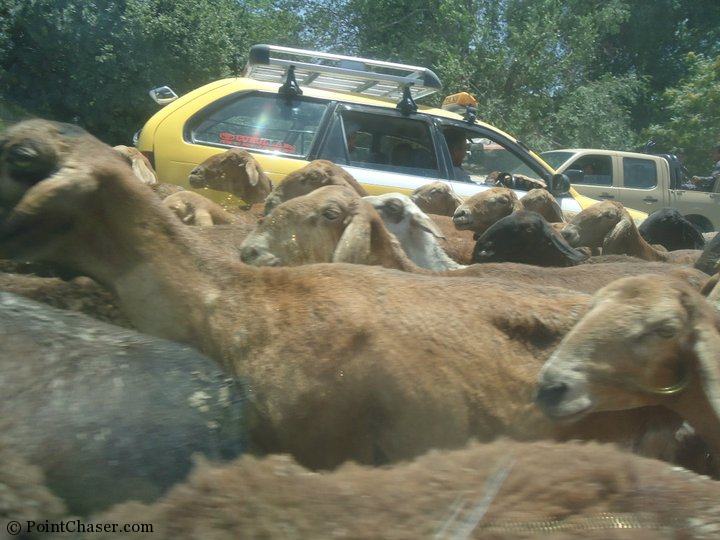


Kabul weather and dress code
It was pretty warm during our stay, but not unbearably so. The only thing bothersome was the constant dust in the air. I would get nosebleeds and resorted to covering my nose when I was outside. People in the west have strong opinions about women wearing burqas, but (even though I didn’t wear one) I realize the practical benefits of it.
First, you’re protected from breathing in all the dust and pollution that covers the city. Second, you’re completely covered and men on the streets won’t harass or ogle you. I had quite a few instances where I got into a one-sided verbal spar with guys for starring. We were completely covered up, wore our headscarves, yet they would stare. This didn’t happen to the women wearing burqas.
When I called them out on it, they immediately looked away embarrassed. In Afghan culture, it is considered extremely disrespectful to stare at females. In the rural areas, men would glance down when females were around. I guess rural folks throughout the world have this sense of decency in common.
Shopping in Kabul
The people of Kabul aren’t the most charming or polite, with the exception of the shop owners. They were hospitable and would leave the store to make us feel at ease. My aunt lives in a gated apartment complex with several stores nearby. In the morning I’d often walk down with my little cousin to pick things up for breakfast. I never once encountered harassment of any kind, even from the younger men.
Many of the shop owners knew we were visiting from abroad and on several instances the store owners would tell me “Don’t worry about paying.” Of course I always refused, but I was still undercharged. They would offer us tea or bottled water, and if they were eating, we were offered food. I found this spirit of generosity endearing. What I learned during my trip was that in many ways, Kabul is a city like any other: Traffic is a nightmare, people can be irreverent, but you always find a few gems among them.
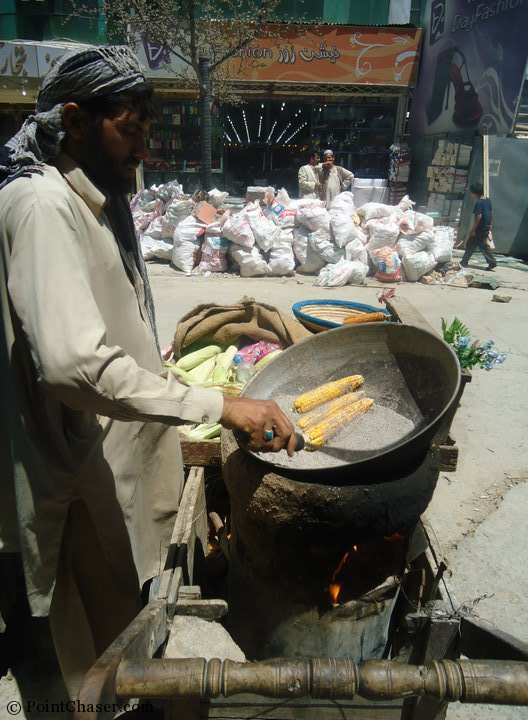
Kabul street vendors
Like this 14 year-old boy who sold ice cream from a cart in the sweltering heat. He was pushing his cart on the sidewalk, looking absolutely exhausted. My mom stopped him and asked what kind of ice cream he was selling. He pulled out a few bars and she began jokingly haggling over the price. He was soft-spoken and politely pointed out that he had other ice cream bars at the price point she was looking for.
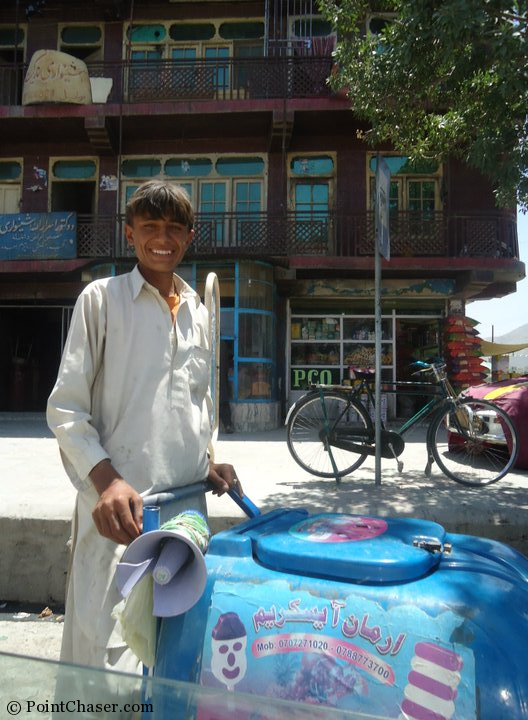
My mom insisted, and he finally gave in and handed over 2 ice cream bars at about half price. When she handed him a week’s salary and told him to keep the change, the look on his face was priceless. He was so polite and mild-mannered, insisting on giving us change.
We instructed him to take an ice cream bar for himself, sit in the shade and take a break, which he did. When we returned a year later, I looked up and down that street every time we drove by, hoping to see him, but we never did. I did see this kid again, who is now 13 years-old:

I reminded him that I had met him the previous year and taken his photo. He smiled politely, though I don’t think he remembered me. He still sold mangoes from a cart and told us he pays his own private school tuition with the money he earns. Private school tuition in Kabul is roughly $100 per month.
Most of the kids I met on the street earned about $2-5 per day. They were the highlight of our trip: So polite and happy all the time, with a tremendous work ethic.
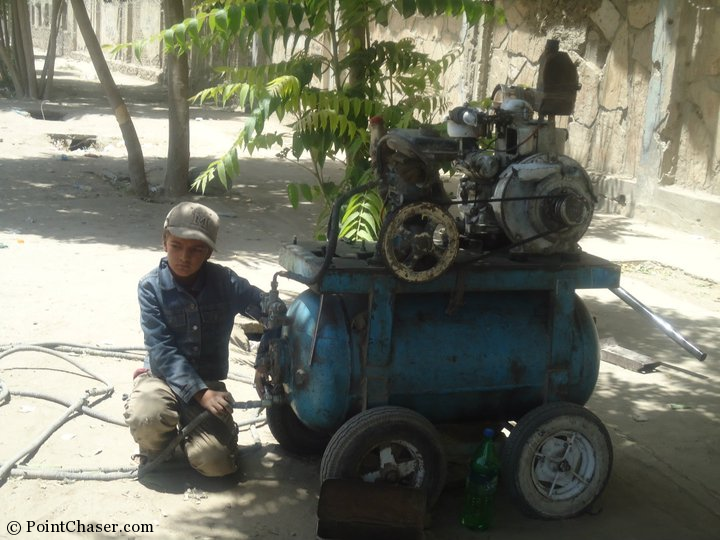
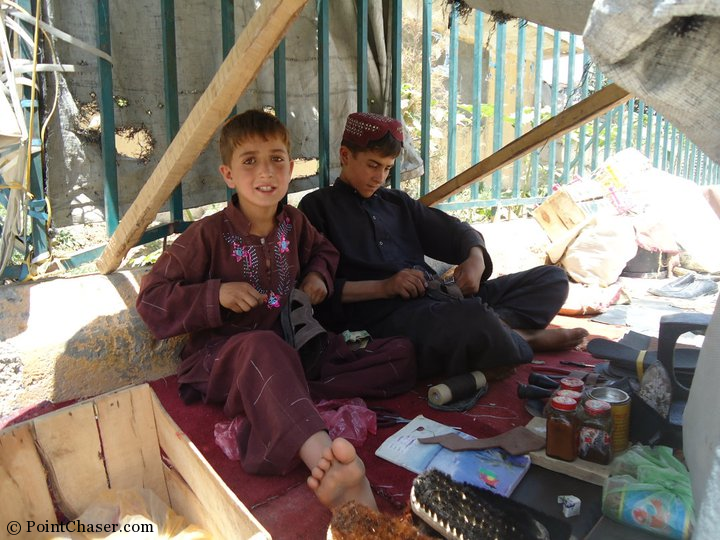
While our trip was mostly positive, there were a few sad moments. One day, while shopping on Koche Murgho (Chicken Street), we noticed a boy about 15 years-old standing in a corner selling packets of gum. We walked into a store when a bunch of kids showed up, trying to sell us sequined wallets. As we were looking at their merchandise, we suddenly heard a loud thud. I looked outside and the boy was on the ground, having a seizure.
My mom and grandmother rushed over immediately and we were all unsure of what to do. Somebody held the boy’s head to stop it from pounding into the pavement, and when it was over, we helped him sit up. He looked completely drained and his nose had a deep indentation from the fall.
I wracked my brain, trying to figure out what to do, and suddenly remembered the scene in Steel Magnolias when Julia Roberts had a seizure and Sally Fields made her drink a glass of orange juice. I asked one of the shop owners for orange juice, but all he had was water. They were all very nonchalant about it, saying things like “This happens to him all the time.”
The boy was sitting in a chair by now, drinking his water and trying to regain himself. My mom and grandmother gave him a months’ salary, told him to take the rest of the day off and see a doctor. We offered him a ride home, but he insisted on walking. That was probably the most heartbreaking thing I’d seen on my trip. Seizures are apparently very common in Afghanistan, yet people don’t receive the treatment they need. I felt helpless in the situation, so when I got home I researched the condition so I’d have some semblance of what to do if I ever witnessed it again.
Despite the ordeal, the boy picked up his box and stumbled home.

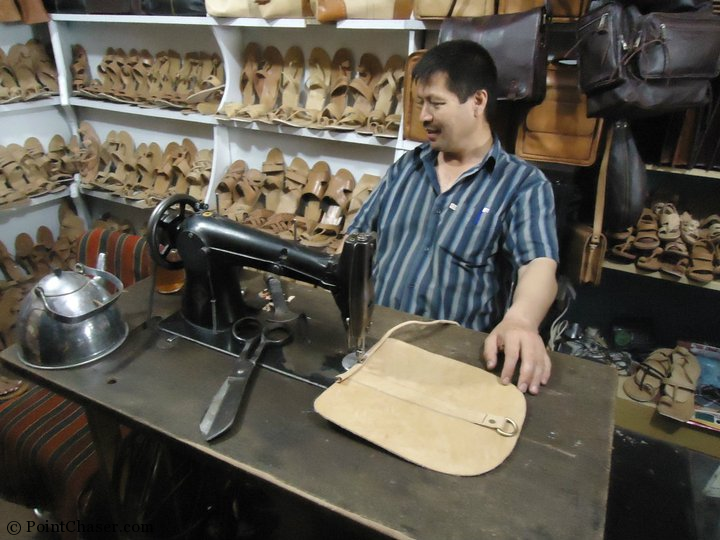
Mandawi Market, Kabul
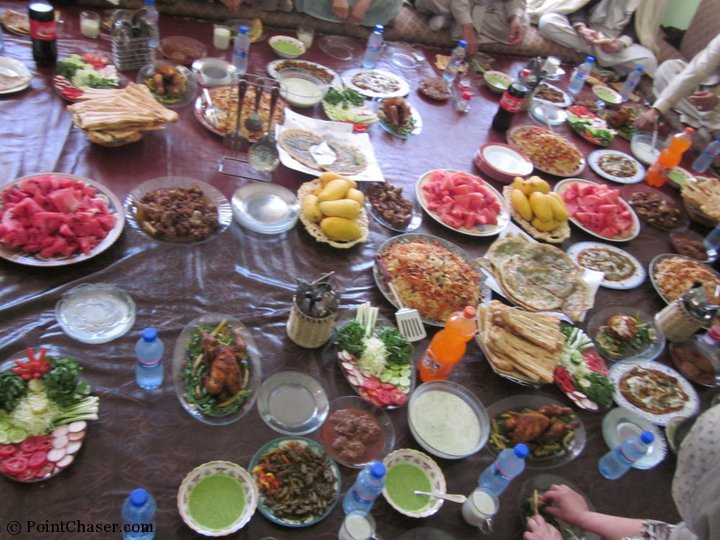
When we went to Mandawi market three days later, the area was bustling with shoppers. I found it admirable that people bounced back so quickly and didn’t let these things scare them out of living their lives.
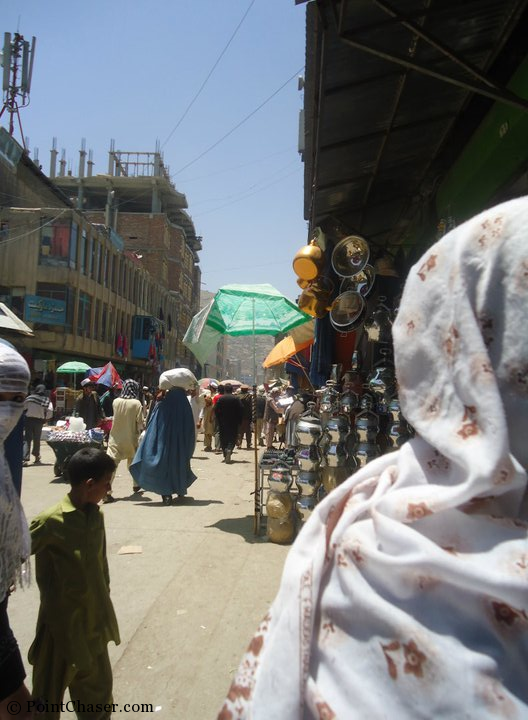

Babur Gardens, Kabul
The day before we left, we visited Babur Gardens in Kabul. It’s where moghul emperor Zahiruddin Muhammad Babur is buried. A 374 year-old mosque dedicated to Shah Jahan is also located on the premises. In the 70’s, the compound contained a pool but that has since been removed.

I believe the entrance fee was around $0.50 for locals and $2.50 for foreigners. The ticket agent insisted on charging mine at the “non-local” price. I found it ironic that even in the place where I was born, people saw me as a foreigner.
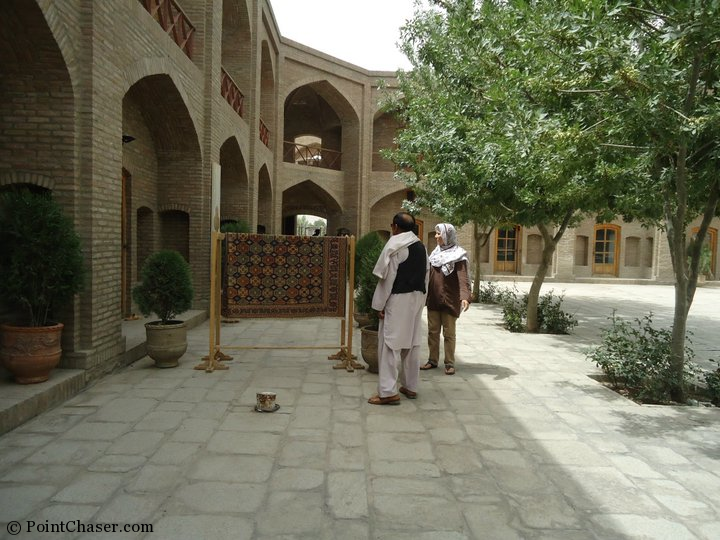
Inside the gardens, there are several rooms where weavers work on beautiful rugs. I asked for a photo, but was rebuffed by the weavers.
When we arrived at Babur’s tomb, we were disappointed to find it locked. We began walking back down, when an elderly man who had been praying at the mosque approached us. He introduced himself as Omar Khan and said he noticed us walking by and asked if we wanted to see the tomb. Of course, we accepted.

The tomb was restored after suffering a great deal of damage during the numerous wars. The marble pieces around the walls are remnants of the original enclosure. He showed us Babur’s grave, as well as that of his niece. I unknowingly sat on her tomb, thinking it was a bench. There is a tree growing out of the side, without water. Many believe this is a testament to the purity of the soul buried there.

Omar Khan gave us brief history of the gardens, the mosque, etc. When he found out we were from Arghandeh, he told us that during the Soviet war he was shot in the back of the head in Arghandeh. He fondly recalled that the people there took great care of him, bringing him milk and honey every day. This is the second time we met a Mujaheed who had been shot in the head. What’s upsetting is these people fought for their country, yet the government does absolutely nothing to repay them for their service.

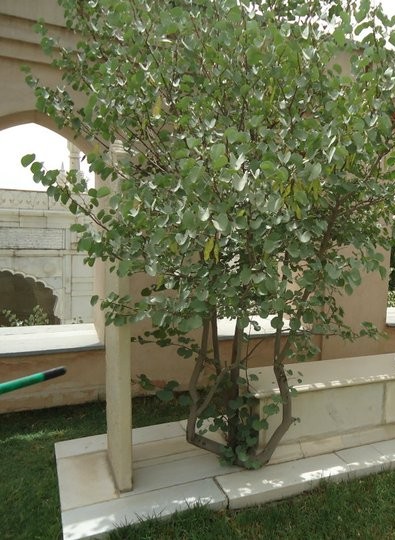
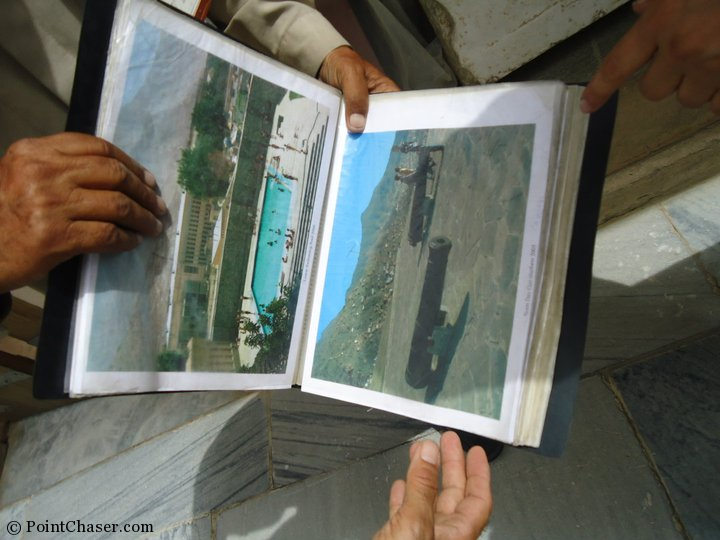
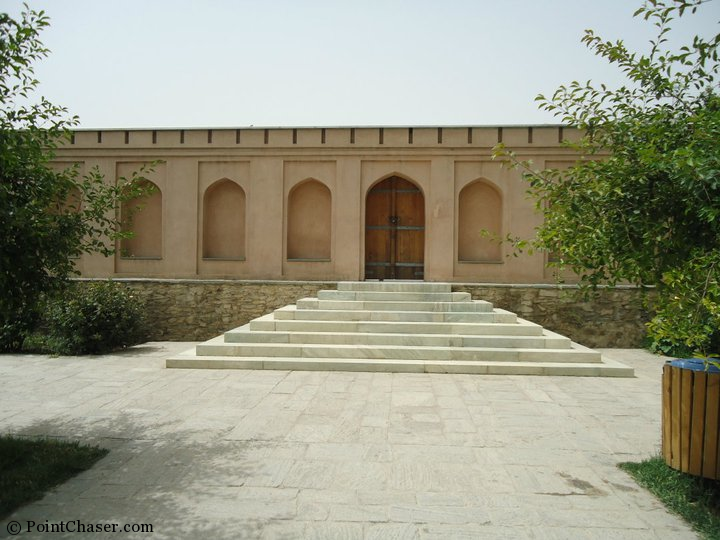

Darul Amman Palace, Kabul
Darul Amman Palace was once a beautiful, thriving center of Afghanistan’s monarchy. It lies in ruins now, but a German architecture firm has plans to rebuild it. I just hope it doesn’t become a pleasure palace for one of the corrupt warlords currently in power.
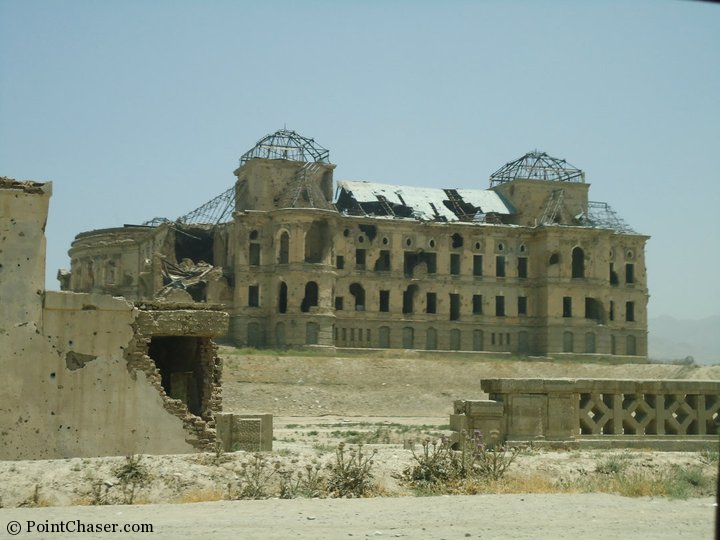
As we made our way back down the hill, we noticed a couple of kids running around the now-defunct garden. There was a tent at the far side, and we drove up to see who the kids belonged to. Their father turned out to be a former Mujaheed who told us he had been shot during the Soviet war and still had the bullet lodged in his head. We asked if we could see the tent, and he guided us towards it.
Inside, the kids were huddled around their mother, who was stick-thin. I was in disbelief that anyone could live like this. Sure, I’d seen refugee camps on tv, but to see a family of five living in a decrepid tent outside a once marvelous palace was too sad for words. The man did odd jobs around town and also bred dogs for a living. We noticed a cage nearby with pups, which he had graciously closed when my mom expressed her fear of dogs. That scene really stuck with me after the trip. After a while of being surrounded by poverty and dealing with professional beggars, I became desensitized to it. I couldn’t tell the rich apart from the poor anymore, until I saw this family.
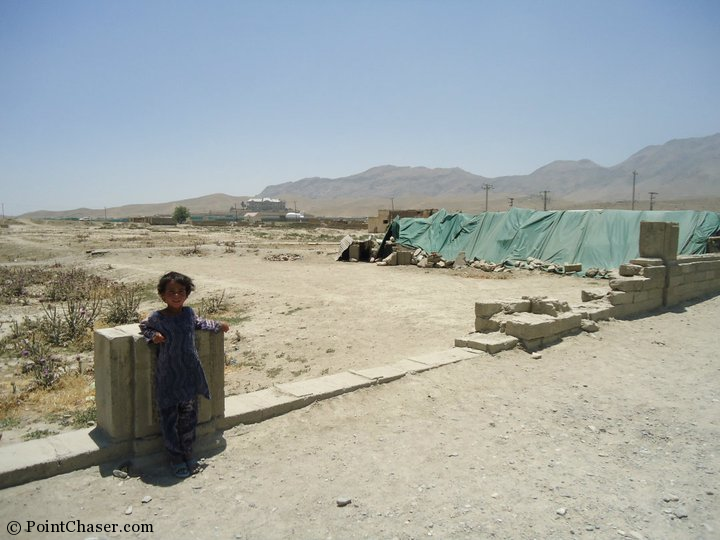
Out of respect for the husband, I refrained from photographing the inside of the tent. Afghan men are protective over their women and don’t approve of people taking photos of them.
Intercontinental Hotel Kabul
The night before we left, we headed to the Intercontinetal Hotel in Kabul. The hotel is no longer affiliated with the chain, but still bears its name. It was once a real gem sitting atop a hill in Karte Parwan, and Kabul’s elite would have their weddings there. My mom insisted we visit during our stay. My uncle showed up on our last night after we had just had dinner and announced that he was taking us out to the Intercontinental Hotel’s restaurant. Of course we were all stuffed, but decided to tour the place instead.
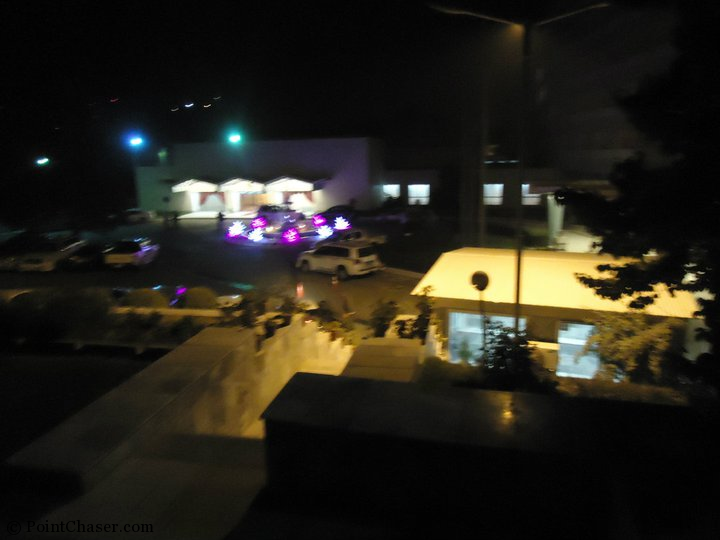
The hotel is located on a hilltop, with a security gate at the bottom. At the gate, the guard asked if we were armed and let us pass when we told him we weren’t. There was an older security guard sitting on a chair in the parking lot, with a weapon by his side.
We headed towards the pool area, which was full of people enjoying the buffet and live music. A waiter approached us, inviting us to help ourselves to the buffet. I was impressed with the cooking stations around the pool and the attendants sporting chef hats.
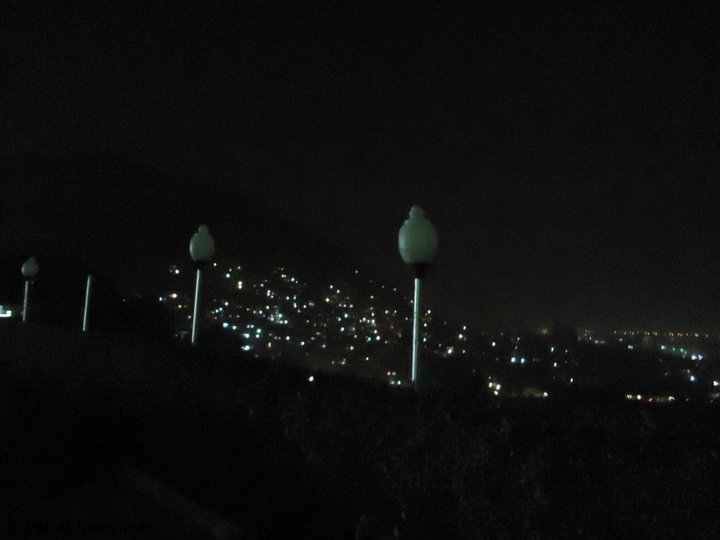
The area was completely dark, lit up only by twinkling lights and a few lamps. It was a very relaxed atmosphere, until suddenly the electricity went out, the music stopped, and we were standing in complete darkness. It came back a minute later, and we continued touring the place.
The hotel is decrepit, though its apparently undergoing renovations. It’s such a beautiful property with lush gardens and a great view of the city. I can imagine it must have been stunning during its hayday. As we headed out, my mom expressed her concern that the security check wasn’t thorough enough and “one of these days this place will be targeted.”
Two days later, as we were watching the news in the living room of my aunt’s house in Germany, we saw the headlines: “Intercontinental Kabul Under Attack.” My cousin immediately called her husband who lives near the hotel, and during the conversation, we could hear gunshots in the background. The attack killed 21 people, including a security guard. I wondered sadly if it was the old man sitting in the parking lot with his rifle by his side…

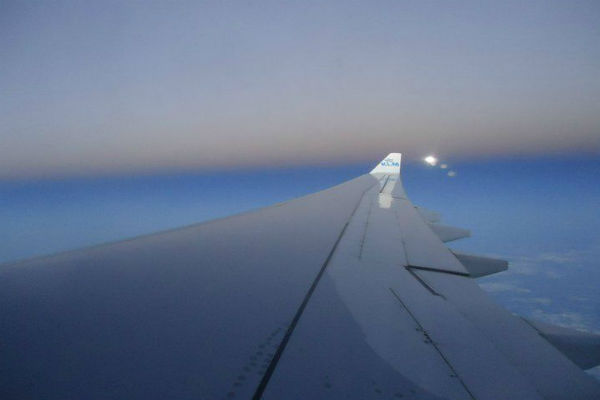

Very nice post and well written. It is nice to read about experiences such as these, places which are rarely visited and certainly in need of attention.
Thank you Deep! I’m glad you enjoyed the post. It’s certainly not your typical tourist destination, but it’s got an interesting history. Stay tuned for part 2!